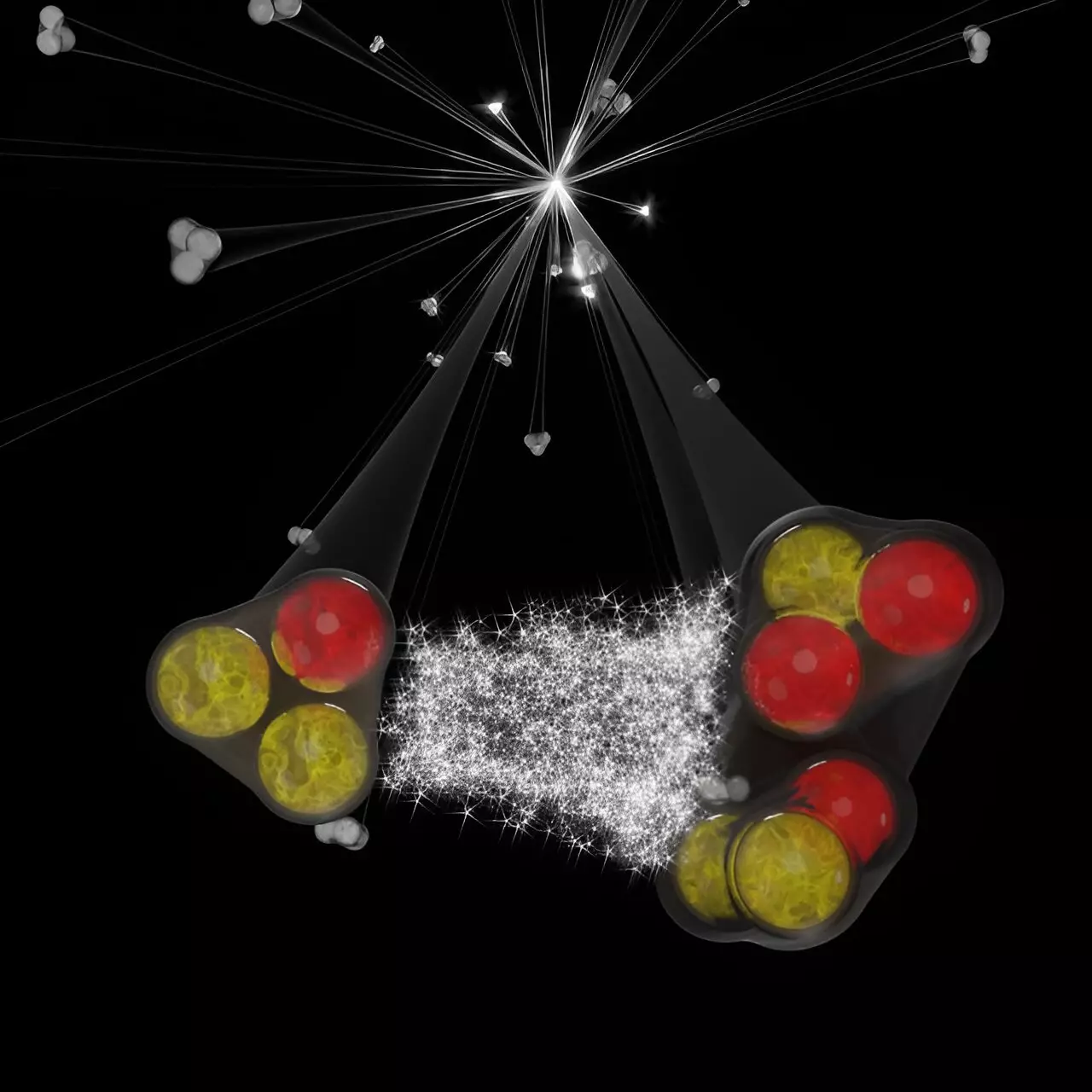Recent research from the ALICE collaboration has markedly enhanced our grasp of interactions in three-body nuclear systems through groundbreaking studies in kaon-deuteron and proton-deuteron correlations. This work, detailed in the latest issue of Physical Review X, unfolds fresh perspectives on fundamental nuclear forces, which are typically characterized by their behavior between two interacting objects. However, extending these principles to systems involving more hadrons remains intricate. A reliable understanding of three-hadron interactions is pivotal for deciphering a spectrum of phenomena in contemporary nuclear physics. This includes the intricate structure of atomic nuclei, the characteristics of high-density nuclear matter, and the enigmatic composition of neutron star cores.
Within the high-energy collisions that occur at the Large Hadron Collider (LHC), protons collide at staggering energies of 13 TeV. These interactions yield a multitude of particles that emerge in close proximity to each other—approximately 10^-15 meters, or femtometers. At these scales, the potential for influence between produced particles becomes a fascinating area of inquiry. When two particles are generated close together and possess similar momentum and directional vectors, their interaction is susceptible to several forces including quantum statistics, the Coulomb force, and strong nuclear interactions. The scenario becomes particularly interesting when one of the emitted particles is a deuteron, as this creates a three-particle dynamic when combined with either a kaon or a proton.
To elucidate the interactions inherent within these three-body systems, the ALICE collaboration utilized its esteemed particle identification resources, focusing on high-multiplicity proton-proton collisions. The collaboration aimed to derive a correlation function that quantitatively reflects how the likelihood of detecting two particles with specific momenta deviates from a baseline expectation of independence. In systems where no interaction occurs, the correlation function registers a value of unity. A value exceeding one can be interpreted as indicative of attractive interactions, while values falling below one suggest a repulsive force, thereby providing insights into the nature of the forces at play.
The data uncovered in the kaon-deuteron and proton-deuteron studies revealed that the correlation functions yielded results indicating a predominantly repulsive force for low relative transverse momenta. This significant finding calls attention to a layer of complexity often overshadowed by more simplistic interpretations of nuclear interactions. For instance, the kaon-deuteron correlations exhibited close proximity at about 2 femtometers, a distance too minuscule to ignore the forces at work. Detailed analyses align well with an effective two-body model that encompasses both Coulomb and strong interactions, showcasing the richness of the interactions present.
Conversely, attempting to apply the same two-body model to proton-deuteron correlations revealed limitations, necessitating a more extensive three-body computation that accounts for the internal structure of the deuteron. This disparity underscores the complexity associated with different types of hadronic interactions and emphasizes the importance of rigorous theoretical frameworks. The adept use of theoretical models that incorporate both two- and three-body strong interactions led to remarkable success in fitting the experimental data, accentuating the capacity of correlation functions to shed light on the intricate short-range dynamics present in three-nucleon systems.
The capacity to measure correlations at such brief distances presents a novel avenue for exploring three-body systems within particle physics. This research opens the door for the application of similar methodologies to future LHC data from Runs 3 and 4, thereby extending investigations into baryons with strange and charm characteristics—domains that remain largely elusive in experimental protocols. The groundwork laid by the ALICE collaboration not only advances our theoretical comprehension but also sets the stage for new scientific inquiries, potentially unveiling further mysteries of the strong nuclear force and the universe itself. Thus, as these studies progress, their implications could ripple across multiple domains, informing both theoretical frameworks and practical applications in nuclear physics.

